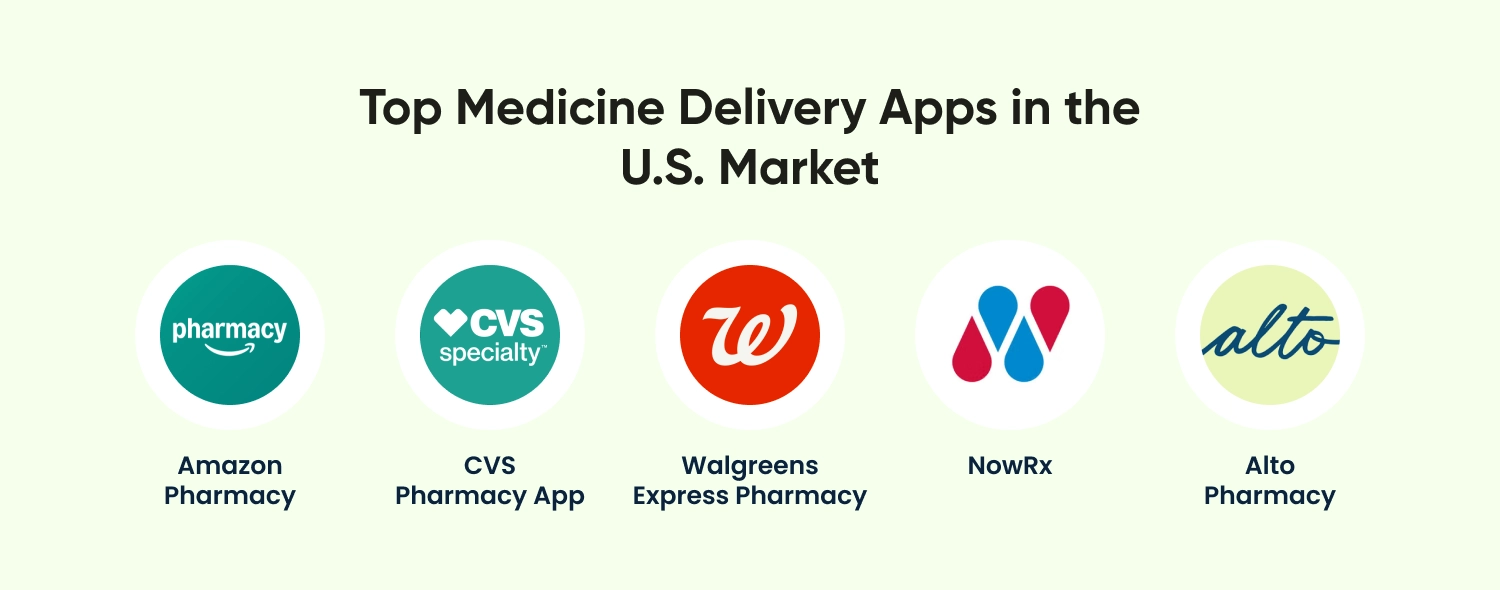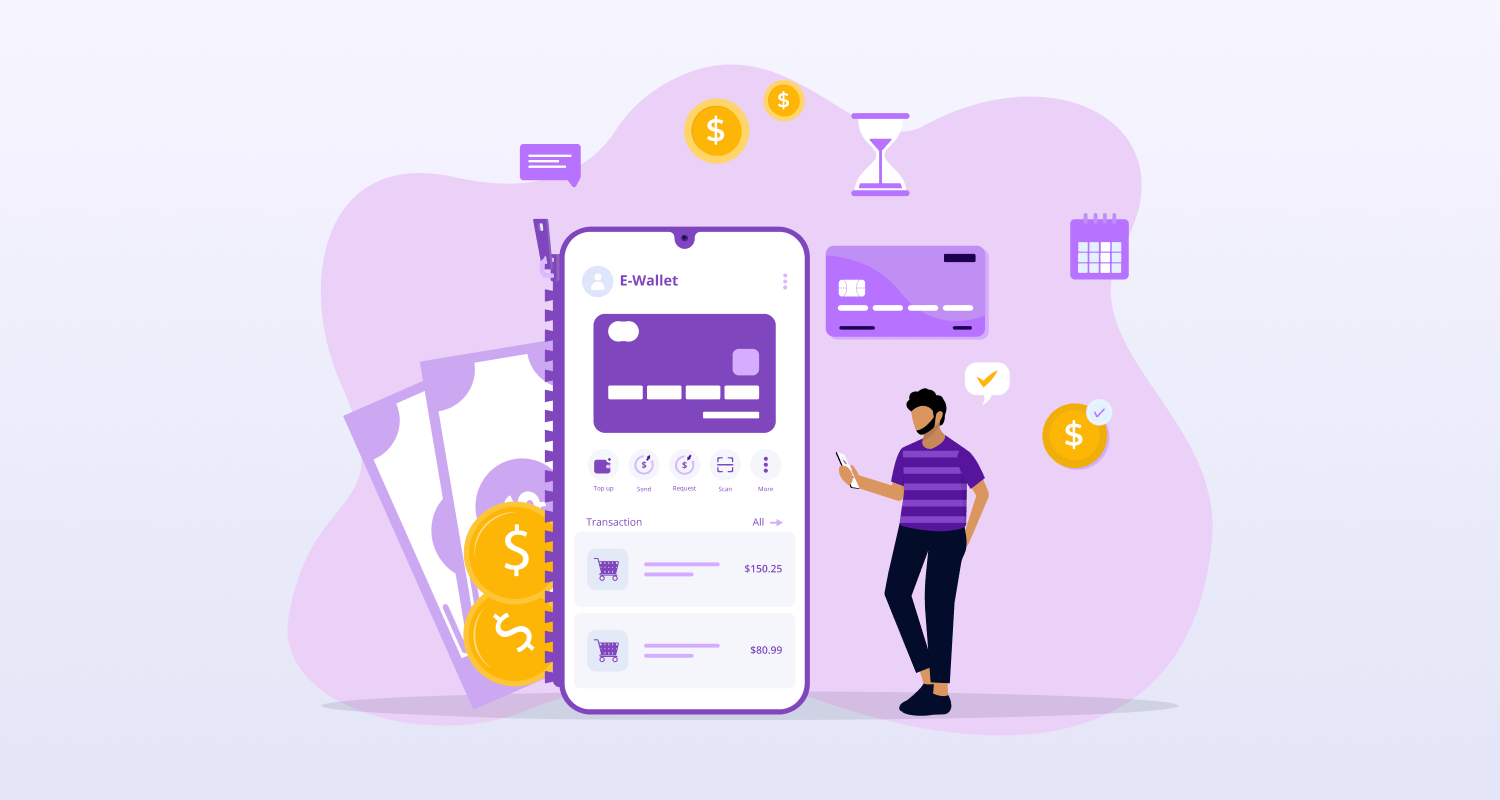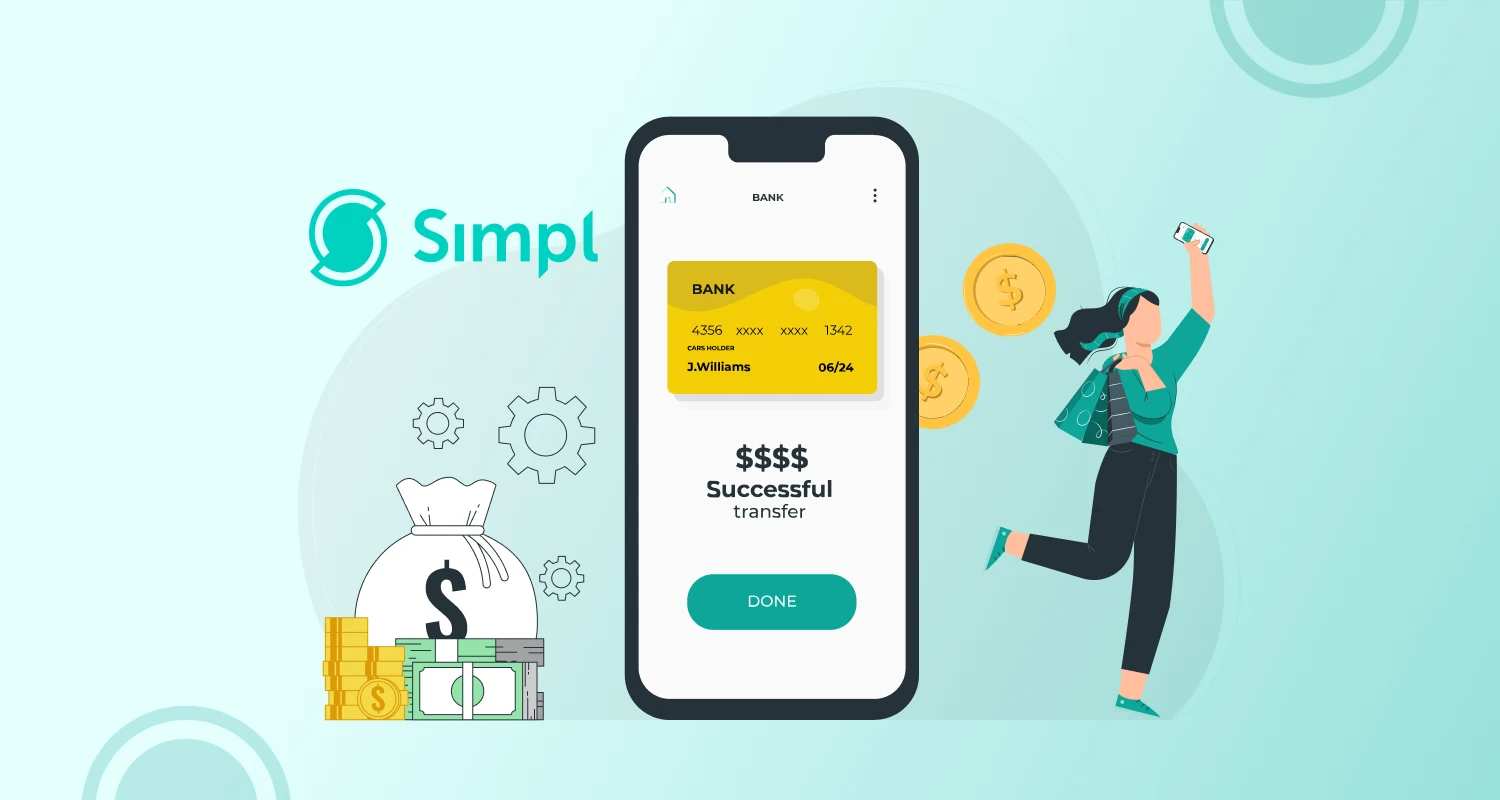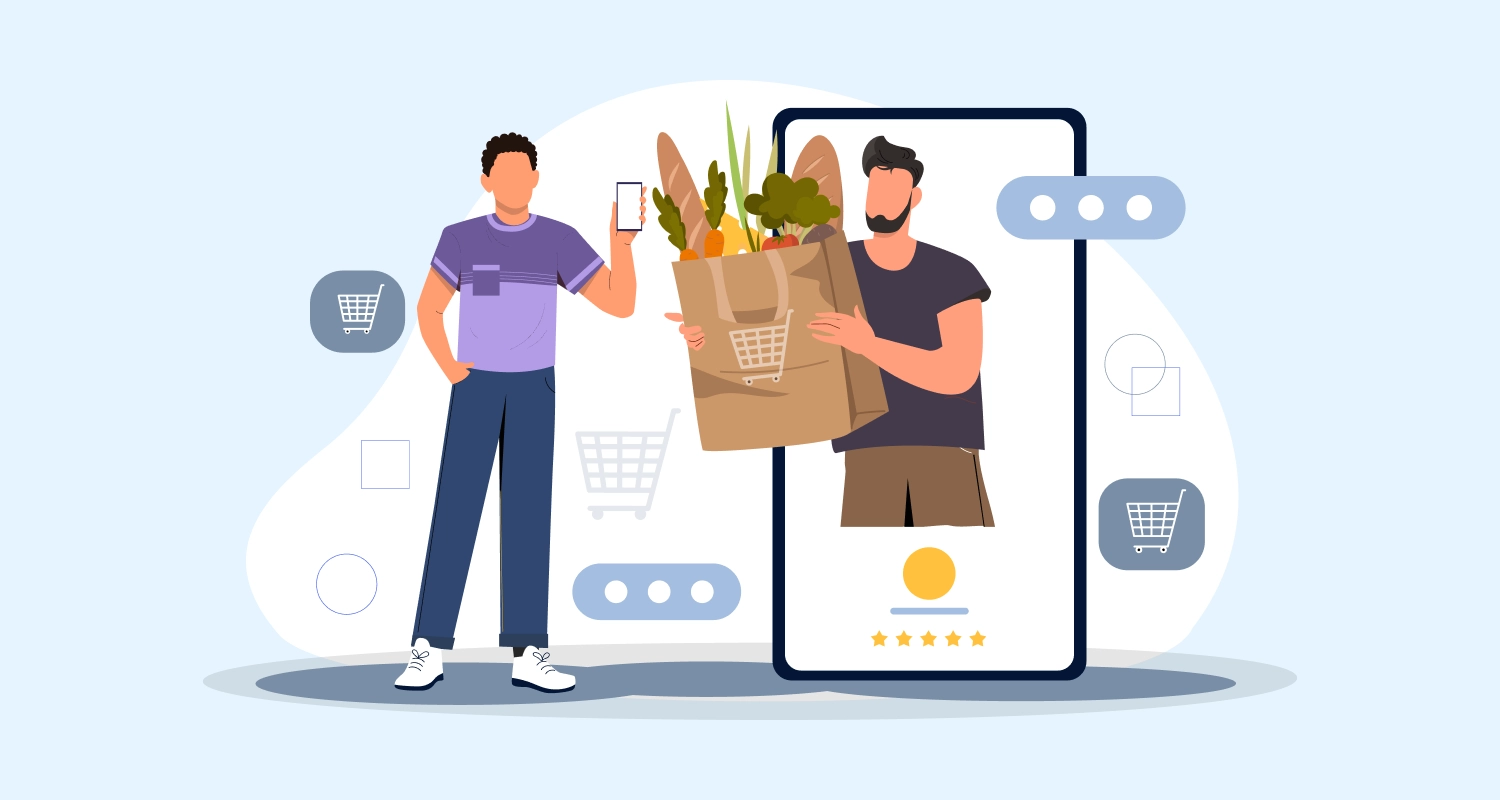Getting medicines delivered to the patient’s doorstep is probably one of the most useful innovations in the Pharmaceutical Industry. While this provides convenience to the average end user it also acts as a means of necessity for elderly people and specially challenged individuals who can’t physically go to the brick and mortar pharmacy stores.
Online medicine delivery app development solves many problems, such as avoiding long queues at local pharmacies, only to find the medicine is out of stock or not available in the store. It also helps vendors extend their opening hours and patients who need emergency access to medicines at odd hours, an option to get instant delivery of those medicines at their doorsteps.
As per Verified Market Reports, the Pharmacy Delivery App Market size was estimated to be USD 4.00 Billion in 2024 and reach USD 12.5 billion by 2023. This goes on to show the popularity and competitiveness of this specific market. So, how can you compete and thrive in such a market and gain a strategic advantage over your competitors? You can either build a medical tech startup or outsource the project to a renowned on-demand medicine delivery app development company, and understand the various elements and factors that go into building a complete pharmacy delivery software.
Let’s start with the basics –
Medicine Delivery App: What is it, and how does it work?
Medicine delivery apps connect pharmacists to the end user (households and individuals) to provide an online platform for buying and selling medicines directly delivered to the patient’s doorsteps. It has revolutionized the healthcare app development industry.
With the boom of quick commerce, medicine delivery app development solutions are also gaining popularity for their simplicity and convenience of accessing medical care from anywhere at any time. All healthcare essentials and medications are delivered to the doorstep, with real-time order tracking and easy payment gateways, making these apps highly important for customers living at any place without visiting the pharmacy for necessary medicines.
There are some benefits of a Medicine delivery app to the pharmacist, customers and delivery personnel.
Pharmacist
- Easier customer engagement
- Diverse pool of customers
- Higher customer retention
- Better marketing analytics
Customers
- Getting medicine from the comfort of home
- Wide variety of medicine
- Access to discounts and special offers
- Faster delivery of medicine
- Easy medicine price comparison
- Able to track orders
Delivery Personnel
- Flexible working hours with different apps
- Incentives and bonuses with each delivery
- Boost morale by being part of the healthcare system
- Multiple order delivery in one trip
Steps to Develop a Medicine Delivery App
Developing a medicine delivery app is more than just coding. It requires careful planning, seamless user interface/user experience designs, and strong backend development. Businesses looking for pharmaceutical app development services need to follow a strategic approach to create secure, scalable, and user-friendly platforms.
Here is the step-by-step guide for developing a medicine delivery app
Step 1: Market Research and Planning
The first step in developing a medicine delivery app service is to do a thorough market research, competitor analysis to create a strong business model. Decide on who your target audience is, for instance, elderly people, working professionals, chronic patients, or acute patients. Then find the gap in the market and do a competitor analysis. Once a target audience and competitor analysis have been done, decide on the business model for your medicine delivery app.
Step 2: Decide on Business Model
Before you start developing the medicine delivery app, you need to decide on a business model that suits your business. There are three main business models that you can use for your app.
1. B2C
There are big pharmacies that store a lot of medicines in bulk, and they develop a medicine delivery app to expand their offline business into an online one. The main advantage of this model is that the pharmacy gets a huge brand recognition in the market, but they have to create a pharmacy inventory management software to maintain a sufficient amount of inventory to offer.
2. B2B2C
This type of business model is specifically designed to act as an intermediary between the medicine supplier and the customers. Such a prescription delivery app for drivers works as an order taker, connecting customers and third-party pharmacies to deliver partners. The creator of such an app doesn’t need to hold inventory. As they work as order takers, processors, and send orders to delivery drivers.
3. B2B
The on-demand medicine delivery app acts as a connector between the company and the supplier of bulk medicines at competitive prices. A medicine delivery app development company aims to provide development services to other businesses like hospitals, nursing homes, and clinics for developing a medicine delivery app. Also, it provides customised solutions as per their branding, including delivery app solutions to hospitals and pharmacies.
Step 3: Choosing Features and Functionalities
After the business model has been decided, the next thing you have to do is choose which features and functionalities you wish to incorporate into your medicine delivery app. Also, you need to choose whether the app will be an MVP (Minimum Viable Product) with limited features and functionalities or a full-scale app with advanced AI-based recommendations and features.
You have to list out certain things as below:
- Whether you want an iOS or an Android medicine delivery app.
- Deciding on native app or cross-platform app development.
- Planning for third party integrations.
Step 4: User interface/User experience Design Planning for a Seamless Experience
The User interface and user experience of a medicine delivery app should be easy to understand and navigate, even for elderly patients. Create a wireframe that defines the user flow and a clickable design of an app. Develop a clean, engaging, and brand-consistent user design with a large icon and voice search assistant for special patients.
Step 5: Selecting the Right Technology Stack
Selecting the right technology is very important for a medicine delivery app development. As the app has a complex backend and front-end architecture, a wisely chosen tech stack helps in the smooth development of the on-demand pharmacy delivery solution.
Here is a rough breakdown of how the tech stack can look:
Frontend Tech Stack
| Category | Technologies |
| Frameworks | React Native, Flutter |
| Language | JavaScript, Dart |
| UI | Tailwind, Material-UI |
| API | Axios, Fetch API, GraphQL |
Backend Tech Stack
| Category | Technologies |
| Framework | Node.js, Django, Spring Boot |
| Language | JavaScript, Python, Java |
| Database | PostgreSQL, MongoDB |
| API | REST, GraphQL |
Step 6: Development Phase
This is the stage where the online medicine delivery app development happens, this is where all the coding begins. The development phase is divided into two phases: Frontend development and backend development.
Where frontend is used to develop a user interface for an Android or iOS app using different technologies. While the backend involves building a database and servers for handling orders, payments and security.
Incorporating AI in the pharmaceutical industry for personalised recommendations and fraud detection within the app. And once all the features and functionalities are added to the medicine delivery app, then it should be gone through proper testing before launching the market.
Step 7: Deployment and Maintenance
After successful testing of the app, it is ready to be deployed on the Google Play Store and Apple App Store. For that, you need to do the following things:
- Set up a secure cloud hosting environment
- Optimize your app for app store guidelines and healthcare compliance
- Conduct a test launch among a small number of the audience from a full-scale launch.
Launching a medicine delivery app is not the end of the job, it continuously needs to be monitored and improved to make the application bug-free.

Cost of Developing a Medicine Delivery App
The medicine delivery app development cost is affected by project complexity, platform choices, developer location, and many other factors.
Here is the tentative breakdown of the cost of development of the medicine delivery app:
| Development Phase | Estimate Medicine Delivery App Costs (USD) |
| Planning & Research | $1,250 – $5,000 |
| User interface/User experience Design | $5,000 – $15,000 |
| Frontend Development | $10,000 – $30,000 |
| Backend Development | $15,000 – $40,000 |
| Third Party Integrations | $6,000 – $15,000 |
| Quality & Testing Assurance | $5,500 – $12,000 |
| Deployment & Launch | $2,000 – $5,000 |
| Post-Launch Maintenance & Support | $2,500 – $8,000 |
The total average estimated cost of developing a medicine delivery app ranges between $6000 to $16000.
3 Factors that Affect the Cost of Developing a Medicine Delivery App
1. Platform Choice
There are two platforms, Android or iOS (Native development), and cross-platform(Flutter and React Native). The cost is more for native development, but gives much better performance, while Flutter is cost-effective but lacks a native like feel.
2. App Complexity
A basic MVP (minimum viable product) is significantly lower in cost than a full-scale platform with features.
3. Development Team Location
As per the geographic location of the development team the cost of medicine delivery app development varies extremely. Here are the average hourly rates of the development team from different regions.
| Team Location | Hourly Rate (Per Developer) | Development Cost Estimate (USD) |
| North America (US/Canada) | $60 – $150 | $120,000 – $250,000 |
| Western Europe (UK, Germany, France) | $50 – $120 | $90,000 – $220,000 |
| Eastern Europe (Poland, Ukraine, Romania) | $25 – $75 | $50000 – $150000 |
| South Asia (India) | $15 – $40 | $30000 – $100000 |
| Southeast Asia (Philippines, Vietnam) | $10 – $50 | $40,000 – $120,000 |
| South America (Brazil, Argentina) | $25 – $60 | $45,000 – $130,000 |
Revenue Strategies for a Medicine Delivery App
Getting an on-demand delivery app is profitable only when you know all the revenue-generating streams to include in your medicine delivery app.
Commission-Based Model
This is the most common and successful revenue model, which is excessively used in e-commerce today. The pharma store owner can charge a commission on each order placed through the delivery app. Sometimes, the market reputation of pharma stores plays an important role in higher commissions and charges. Generally, the commission depends on the current market rates and scenario.
Subscription-based Model
The subscription model is another commonly used revenue model that is being used in medicine delivery apps. In this model, the user has to pay a certain amount of fees on an annual or monthly basis for using additional features and services. By encouraging users to sign up by giving them benefits like discounted prices, early delivery, exclusive deals, and many more. This way, the app offers a regular cash flow, which helps in the growth and operation of the company.
Surge Pricing Model
Surge pricing enables the app to alter the prices as per market conditions. Which leads to a price increase during peak hours or on any special day. This is quite beneficial to the company to gain more profit as well as an increase in demand for delivery partners.
Advertising Model
Featuring ads of medicines, health-oriented products/services or hospitals on the medicine delivery app. It’s a smart way of transforming the delivery app into an advertising platform. A certain amount is charged for placing an advertisement on the delivery app.
Collaborative Partnership
On-demand delivery applications generate revenue by broadening their user base, increasing user engagement, and increasing income by partnering with other companies. By building connections, this partnership gives benefits to both parties. With this collaboration, the delivery platforms try to give a smooth and thorough experience to the users.
Top Medicine Delivery Apps in the U.S. Market

Customers prefer to buy medicines online, attracted by discounts, speedy home delivery, and many other things. With the best medicine apps in the US, you get everything from over-the-counter to prescripted medicines.
Below is the list of the top 5 medicine delivery apps in the US market
1. Amazon Pharmacy – PillPack
Amazon’s PillPack is an online medicine delivery app that provides free delivery of medicines to customers’ homes. It is able to give a personalized experience to users because of two things. First is when someone orders medicines from PillPack, it delivers the medicines sorted by the amount and the doses specified in the prescription. Another thing is that when someone makes an account on the app, they can access the caregivers.
2. CVS Pharmacy
CVS Pharmacy is one of the best online medicine delivery apps in the US. It serves more than 9k areas in the US. And along with medicines, it offers other healthcare-related products as well like a first-aid kit and personal care products. To make a smooth customer experience, it provides refills, medical adherence, and delivery schedules, making it the finest medicine delivery app in the US.
3. Walgreens Express Pharmacy
Walgreens is the second-largest medicine delivery app in Europe and North America and has more than 11 million users at present. Customers get an excess of flu notifications, 24/7 pharmacy chat gives a personalized experience. It provides free shipping for most of the products, but if you want overnight delivery, it charges a certain fee.
4. NowRx
NowRx is known for its quick medicine delivery across various cities in the US. It has incorporated Artificial Intelligence to provide speedy and efficient delivery. NowRx includes features like order tracking, over-the-counter medicine by video conferencing with a chemist and uploading of prescriptions. NowRx aims to reduce the delivery time and related cost, and provide an excellent user experience.
5. Alto Pharmacy
Alto Pharmacy makes prescription management simple and efficient. It provides various benefits like same-day delivery, assistance in insurance, and personalised reminders. The app provides access to professional care, in-app messaging to the pharmacist at any time. This ensures that users get the service when they need it the most.
Benefits of Medicine Delivery App Development for Businesses
Investing in a medicine delivery app development is not only profitable, but it also scales the business in a growing industry. Hence, businesses adopting the business early get a competitive edge in the market.
Some of the benefits of developing a medicine delivery app are as follows:
Expanded Market Reach
An online medicine delivery app is not limited to certain areas like traditional pharmacies. You get a wide market across cities and even internationally. That specifically caters to elderly and busy people who prefer online medicine delivery. Again, it’s not like a local pharmacy that stays open only in daytime; rather, it provides 24/7 availability with a quick delivery service.
Automated Operations and Cost Savings
With the advantage of AI-driven inventory management, you can easily manage the stocks and prevent overstocking. It automates the order processing, which reduces the need for additional staff. And lowers the customer’s acquisition costs with built marketing tools for personalised recommendations.
Competitive Advantage
By investing in medicine delivery app development, you can easily differentiate your business from the competitors. And can meet the customer’s expectations, along with staying competitive in the market.
Increased Customer Retention
By giving personalized recommendations, the users stay engaged with your delivery app and don’t think of another app. And the subscription-based revenue model gives various benefits like 24/7 availability and refill of medications, ensuring customers keep coming back.
Why Choose CMARIX for Your Medicine Delivery App Development?
CMARIX is an expert in pharmaceutical apps development, delivering innovative and scalable solutions. We have 14+ years of experience in developing robust and compliant medicine delivery apps. Whether you have a pharmacy chain, a startup healthcare company, or you are a health service provider, we can help you transform your ideas into reality with our cutting-edge technology.
Wrapping Up
The demand for medicine delivery apps development services is increasing, and if you don’t act at the right time, you may lose a good amount of customers in the growing medical tech startup industry. However, to get a competitive edge in the marketplace, you need to use the right technology, features, and functionality for developing a medicine delivery app. If you are looking to develop an on-demand delivery app, then you need an experienced medical device software development company. Who have dedicated developers with several years of experience in developing an online delivery platform.
FAQs For Medicine Delivery App
What is a Pharmacy Delivery App?
The pharmacy delivery app is a medicine delivery app, where you can place an order with a prescription and the order gets delivered to your home. Along with many benefits like quick delivery, in-app messaging, and over-the-counter medicines with a video conference.
How Much Does It Cost to Develop a Pharmacy App?
The cost of developing a pharmacy app ranges between $10,000 to $150,000, which depends on the features, complexity, and platform.
Do Medicine Delivery Apps Make a Profit?
Yes, Medicine delivery apps do make a profit, with various revenue streams like a subscription model, Surge pricing, and a commission-based model. This provides benefits to both the users and the company.
How Do I Create a Medicine Delivery App?
To build a medicine delivery app, choose the features, select a technology stack, and hire a medicine delivery app company. Once developed, test the app, then launch it according to the compliance with health regulations.







